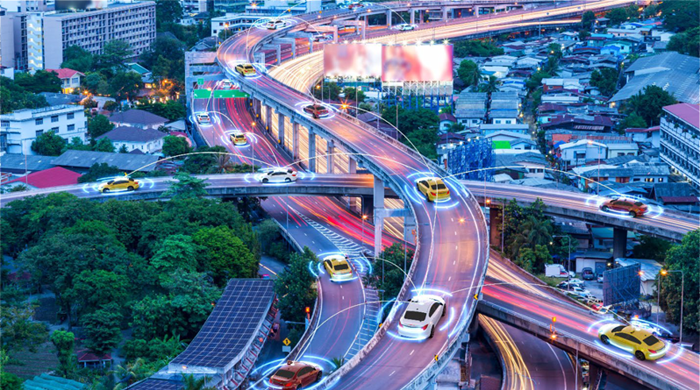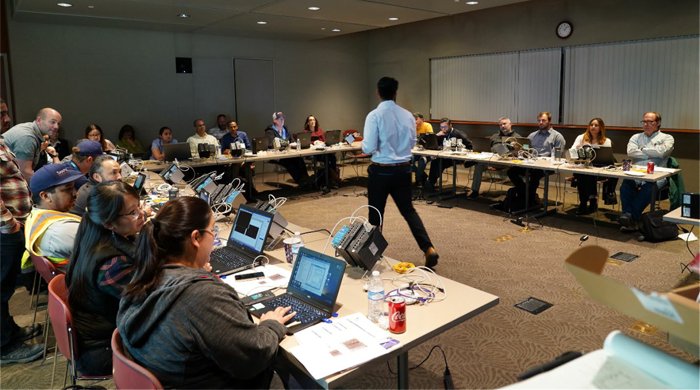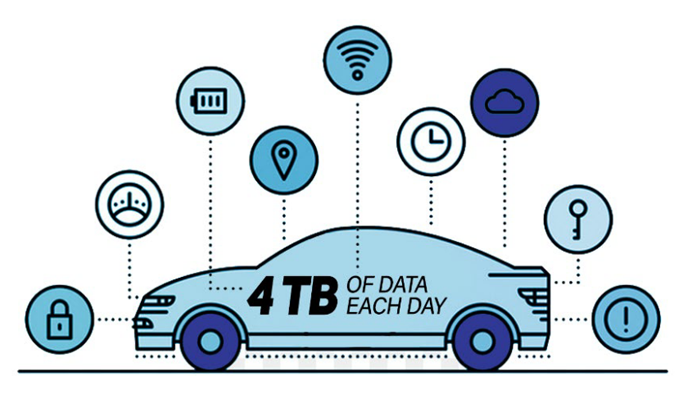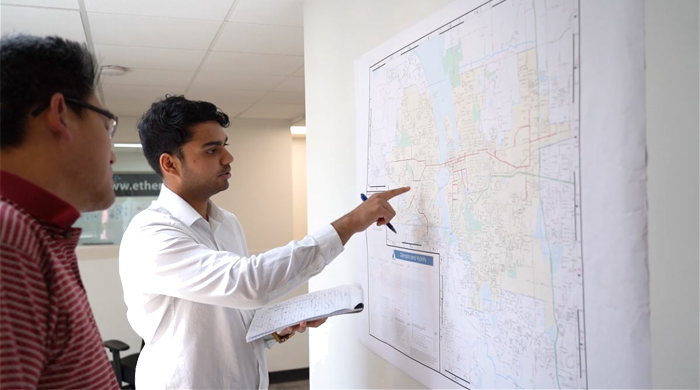Connected vehicles, Autonomous vehicles, IOT, 5G, Smart Cities - Are you sure your COMS are Ready?

Connected vehicles, Autonomous vehicles, IOT, 5G, Smart Cities... All hot topics anywhere you look in ITS publications and websites. Well, it's true, it's the future of transportation and it's coming sooner than you realize. That's great news for drivers and pedestrians out there because these upcoming technologies promise to make the roads safer. In fact, according to the USDOT, using some of these new technologies - even in their early stages - can affect over 329,000 crashes and 7,000 fatalities annually. So why haven't we fully embraced all of these new ITS technologies and deployed them nationally?
There are a few reasons for this.
■ Technology Know How
Tech know how is a trending struggle in today's ITS environment. Gone are the days of electrical engineering being good enough to handle a city's transportation communication infrastructure. The reality is that now you must be a network engineer as well. This is a big shift in technical aptitude for your average ITS manager who is now over 45 years old and never really had to deeply understand networks before. Today's expectations are different than 10 years ago. We must all learn more about how networks work so we can effectively deploy, monitor and manage our intersections. Whether its IP Video, vehicle detection, DMS or just the latest controllers that rely heavily on the network for reporting statistics, the network has become a critical piece of infrastructure that simply cannot be ignored.
Some of the ITS industry manufacturers have taken note of this technology gap and started to offer networking training to municipalities to help bridge the gap between the old and new way of doing things. An example of this can be found here.

Trainings like EtherWAN's Intro to ITS Networking course offer valuable information about ITS best practices, to help you better understand the functionalities of your network.
It is a good idea to start with some basic training and then seek out more advanced concepts as needed. Once the basics are learned, the true big picture emerges regarding the current state of communications within the city's ITS infrastructure. Managers can understand the basics and will know what proposals make the most sense. Traffic engineers gain a greater understanding of the potential challenges that lie ahead. Then the question, "Are we ready for the next generation of technology" can easily be answered. Due to the rapid advancement of technology recently, it's not uncommon that the answer is usually a resounding "No!"
■ Existing Communication Infrastructure
Supporting this observation is data gathered from audits that EtherWAN has performed across the country. The vast majority of cities, in fact over 90% in the US, are not prepared for the latest technologies that are on the road today or are coming within the next couple years. This is alarming given the amount of lives new technology could potentially save annually, not to mention the travel time reduction of 27%-42%. In fact, most audits today show that a large percent of existing ITS networks are not configured correctly, not optimized or not even connected at all.
We are seeing the rapid increase in technology in vehicles today more so than ever in history. It is even possible that we will start to see a Moore's law type of phenomenon begin to emerge. The two biggest hyped categories today are Connected Vehicles and Autonomous Vehicles. Connected vehicles are already here. There are many manufacturers that ship their vehicles with a 4G modem already built in. The connection from the vehicle is often described as:
V2X, V->X = Vehicle to Everything
CV2X, CV->X = Cellular Vehicle to Everything usually focused on 5G
While 4G technology is already being deployed today, there is a large amount of latency with the technology, making it unsuitable for real time decision making.
Within the V2X ecosystem there are 4 types of connections:
- V2I = Vehicle to Infrastructure
- V2V = Vehicle to Vehicle
- V2P = Vehicle to Pedestrian
- V2G = Vehicle to Grid
These technologies are already deployed as pilots in a variety of locations across the country, and the results are promising. So much so that it is worthwhile to begin planning your data networks for them in the near future.
As vehicle connectivity becomes standard in almost all car models, consumers will begin to see value and even demand more functionality with the data that is being made available from their vehicles. Currently we see up to 4TB (4 Terabytes or 4000 Gigabytes) of data being produced in each vehicle every day.

While not all of it is used or sent outside the vehicle, this gives an idea of how important a good network infrastructure should be to be able to transport the relevant data to the relevant locations. Network requirements are going to continue to grow over time, so implementing a network today for today's needs will quickly become obsolete and ultimately be a waste of time and money. It appears that most technology cycles are now averaging 8 years (and as long as 15 years) for some city ITS networks. For this reason, we must build some future proofing into our existing infrastructure.
While every city is different, here are some basic guidelines to follow when considering updating your communication network:
- Get educated on networking even if it's the basics
- Conduct a network audit with a knowledgeable company
- Plan your new network for the next 10 years
- Deploy your network efficiently
- Be sure you know how to maintain your new network (get more educated)
- Monitor your network for optimized performance
Networks being deployed today that are ready for future ITS technologies have 10Gbs backbones, and every intersection is connected with Fiber and has multiple redundant paths. Multiple VLANs will be used and VRRP routing will connect “hubs” to the TMC. While this may not be feasible to achieve within your current budget, there are ways to move non-connected intersections or copper only intersections closer to the ideal. This includes leveraging ITS-oriented Ethernet Switches, 4G, Wifi and in some cases even VDSL2 technology.
If this all sounds daunting, that's because it is. It's not easy to make the transition from electrical engineer to network engineer, especially in ITS where there are distinctly different needs from your typical office IT. The good news is that there are ITS networking experts out there who can help.

A network audit of your current communications infrastructure can help you identify problems and potential solutions for your application.
■ Funding
As if the technical aspect of preparing your network for today and tomorrow wasn't difficult enough, you will need to find ways to pay for it all. Some agencies have had success finding the appropriate government program. There is money out there for Smart City applications - especially if you are able to move quickly and establish yourself as an early adopter. You can find helpful information on this topic on USDOT's web site.
In conclusion, the future of ITS is happening at an accelerated pace. Before getting too excited about the new software and hardware available today and in the near future, be sure to get your communications infrastructure in order. If you follow the systematic approach mentioned earlier your chance of success increases. With a good foundation of knowledge and infrastructure, the implementation of any new ITS technology will be a lot smoother, with less time and less money spent.
What should you do next? Pursue Specific ITS networking knowledge through industry experts and even the likes of IMSA. Get your plan together and start upgrading, you will be glad you did.
Jim Toepper Biography
Jim Toepper has been in the networking industry for 24 years, 16 of which were spent networking in ITS. Jim has worked for large networking companies such as 3Com, Digi, Moxa and now EtherWAN and has seen the industry grow from low speed modems to high speed 10Gbps interconnects over the years. His role and passion within EtherWAN alongside his ITS communications teammates is to design purpose built products for ITS communication applications.





